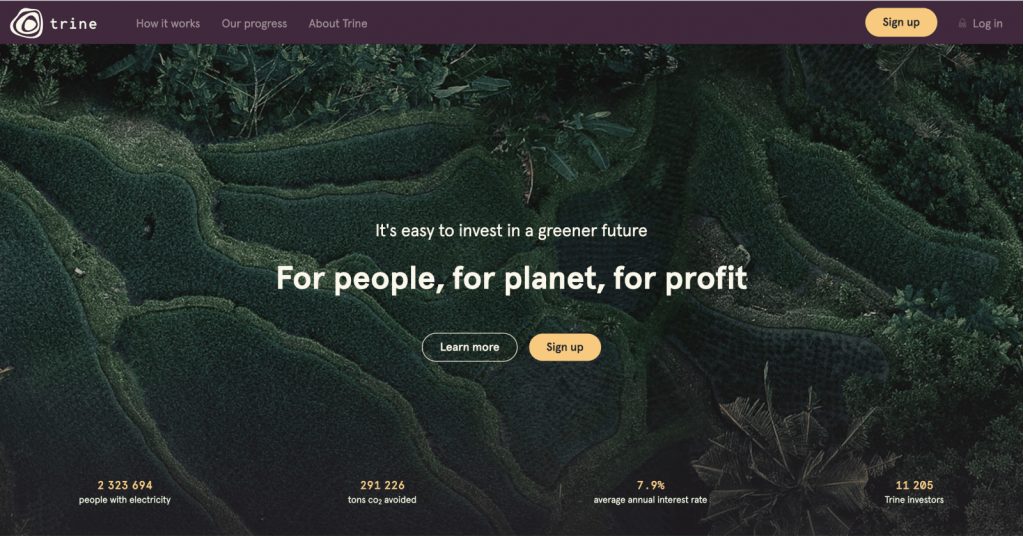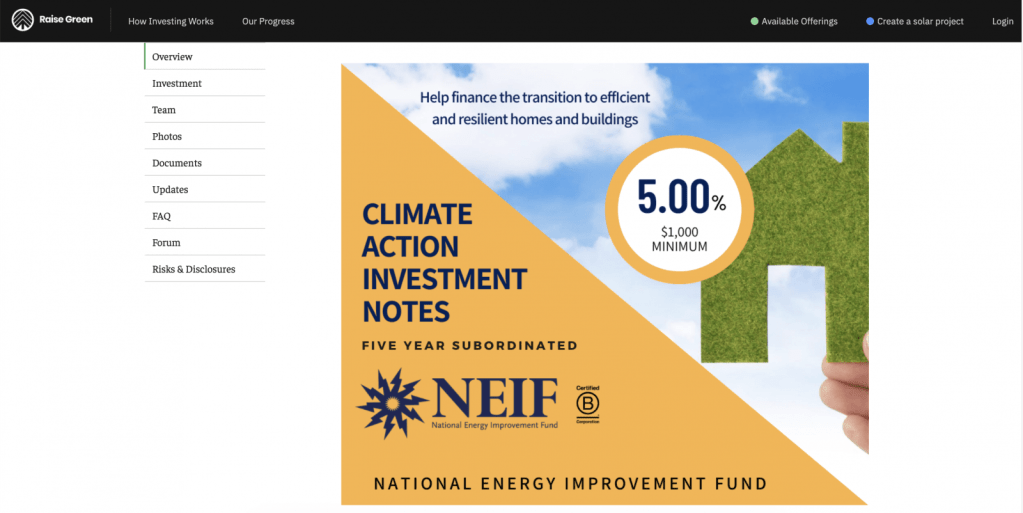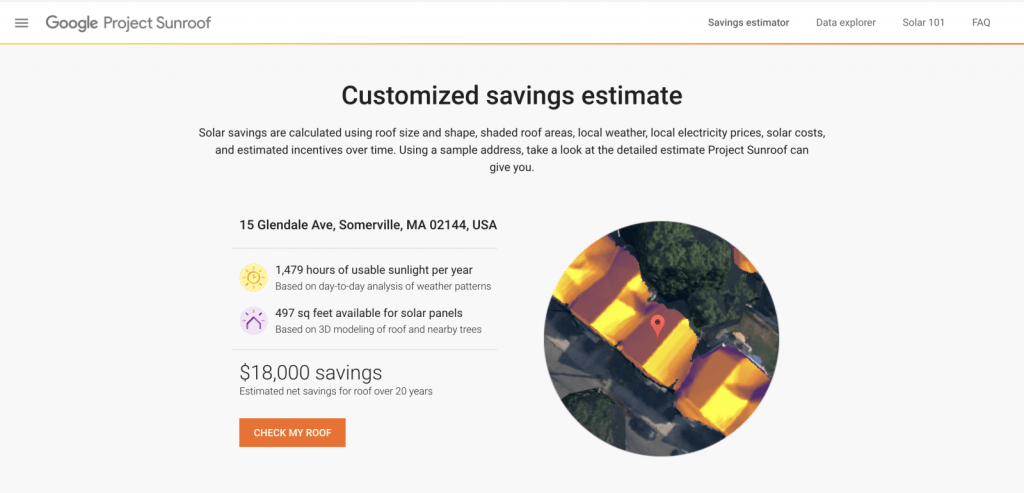1. Yieldcos
Yieldcos allow individual investors like you and me to invest in building wind, solar, and battery farms. Renewable energy companies use Yieldcos to raise money for project development. The more Yieldcos have invested, the more these companies can build.
Yieldcos are listed on public markets and their shares rise and fall with the market. Unlike utility stocks the largest Yieldcos, BEP(C) and NEP, still have a strong correlation with the overall market (ideally their correlation would be lower). The greatest advantage of yieldcos is their high dividends.
If you want to help these companies deploy more renewable energy faster, Yieldcos are a strong option.
% CHANGE (5-YR)
+171.52 %
BEPC owns 16+ GWs of production (~10.4m US households of electricity) globally. BEPC is a "Yieldco" which pools investments to buy renewable energy plants and return regular dividends.
% CHANGE (5-YR)
+102.98 %
Clearway owns 4.3+ GWs of production (~2.8m US households of electricity). Clearway is a "Yieldco" which pools investments to buy renewable energy plants and return regular dividends.
% CHANGE (3-YR)
+118.84 %
% CHANGE (5-YR)
+201.87 %
They own 2.3+ GWs of production (~1.5m US households of electricity). Hannon is a "Yieldco" which pools investments to buy renewable energy plants and return regular dividends.
% CHANGE (5-YR)
+149.09 %
NEP owns 5.3+ GWs of production (~3.4m US households of electricity). NEP is a "Yieldco" which pools investments to buy renewable energy plants and return regular dividends.
2. Renewable energy ETFs
If you want to invest more broadly into the full ecosystem of renewables, there are a few renewable energy ETFs to choose from. These go back through the supply chain: from innovation, to manufacturing, to deployment of renewable energy infrastructure.
There are two flavors of renewable energy ETFs to choose from.
First, there are those that are solely focused on renewable energy.
ICLN's high AUM and low(er) fees make it a good option if you don't have time for deeper research. It invests in companies building & deploying renewable energy around the world. AUM = $1.3B. Fee = 0.46%
If you want to invest in the technology behind renewable energy, CNRG is a good option. It does not invest directly in power generation, but the companies innovating & manufacturing in the space. While its AUM is low, it does have low fees for the sector. AUM = $52.6M. Fee = 0.45%
If you want to directly invest in solar, wind, and battery farms, Yieldcos are your best option. YLCO invests both in global Yieldcos & companies that generate 50% of their revenue from renewable energy. AUM = $52.3M. Fee = 0.65%.
Second, there are those that expand their focus to other companies working on decarbonization like electric cars, batteries, and LEDs.
PBW includes both renewable energy and companies in related spaces like electric cars & batteries. It is heavily focused on the US (85%) and caps any company at 4% of the fund, giving you more exposure to smaller companies. AUM = $658M. Fee = 0.70%
QCLN is more focused on decarbonization. It still invests in renewable energy generation (wind/solar), but also: advanced materials, smart grid, & energy storage / hybrid conversion. Like PBW it focuses heavily on the US (83%). AUM = $474M. Fee = 0.60%
Like PBW and QCLN, ACES goes beyond renewable energy to focus on broader decarbonization. It includes electric cars, batteries, fuel cells, & smart grids as well as wind and solar. AUM = $358M. Fee = 0.65%
In order to be included in SMOG a company must make 50% of its revenue from renewable energy OR energy efficiency. SMOG has lower AUM & fees that are in line with the other decarbonization ETFs. AUM = $144M. Fee = 0.62%.
PBD is the closest to an "actively managed fund." It highlights companies the fund managers believe have "potential for capital appreciation." It's threshold for inclusion is low. Companies must derive >10% of their revenue from renewable energy. AUM = $99.2M. Fee = 0.75%.
3. Crowdfunding projects
Oh, how we wish there was more of this in the US!
If you are reading this from the EU, where crowdfunding laws are much simpler, you can invest directly in funding solar projects and generate some great returns.
There are a bunch of renewable energy crowdfunding platforms in the EU. Many have been launched through a government organization called Citizen Energy EU. You can check out the full list. Here’s a few that stand out to us:
Trine allows investors in the EU to fund solar projects in Africa and Asia. They are focused on bringing electricity to places of the world that don’t have it yet while delivering some pretty nice returns to their investors.

Lumo is a crowdfunding platform based in France. They allow investors to fund solar and wind projects around the world.
The Sun Exchange is based in South Africa, where despite being one of the sunniest countries on the planet, there is still relatively little solar energy. They allow investors to buy solar cells and get rent from leasing them to the building. Note that they payout in Bitcoin. They do accept investors from the US, but you have to be an accredited investor.
4. Green bonds
Green bonds are bonds that finance renewable energy projects. Bonds fit renewable energy well as these projects need a lot of money up front and then pay out consistently over time.
There are two (easy) ways you can put your savings to work with green bonds:
- Buy green bond ETFs. Corporations, governments, and municipalities around the world are issuing green bonds. While you can buy these bonds directly, buying individual bonds can be expensive and can be harder to sell quickly. Blackrock (BGRN) and VanEck (GRNB) both offer green bond ETFs that invest your money in hundreds of green bonds from around the world. You can buy and sell them as easily as a stock or any ETF. They have little overlap in their holdings, so in our portfolios, we hold both.
- Buy directly. Raise Green is a new platform for investing directly in renewable energy projects in the US. They don’t have direct investments yet, but you can buy bonds through the National Energy Improvement Fund right now (as 09/28/20).

5. Your home
If you own a home and live in a sunnier region of the country, putting solar panels on your roof can be a sound investment. In one of our favorite examples, David Green, author of Zero Carbon Home, began generating a 15% return on investment (!!) from putting solar panels on his house and making other energy efficiency upgrades.
Check out what an investment in solar could look like at your house. Type your address into Google’s Project Sunroof. Don’t worry — it’s free and they don’t try to sell you anything.
Should you be considering investing in solar on your home, do it ASAP. There are generous federal solar tax credits that will be reducing every year from now until 2024.
If you’re ready to make the change to invest in home solar, checkout Energysage. They are an online marketplace that helps you find the best quotes from installers in your area.
6. Your land
If you live in a more rural area and have land, installing a larger solar array could make sense for you.
While you would need to have a good amount of cash at your disposal, the tax credits make it highly advantageous right now.
A friend of ours installed a half acre of solar panels on his farm. He did it because it’ll take only 2.5 years for him to recoup the investment. Then, for the next 17.5+ years, he’ll be generating a profit.
About Carbon Collective
We built Carbon Collective because we couldn’t find anywhere to invest our retirement savings that made both ethical and financial sense in the age of climate change.
So we built the world’s first series of climate-friendly, diversified, low-fee investment portfolios and teamed up with a world-class online brokerage platform to automatically manage them.
Imagine an index fund in a world without fossil fuels. That’s how we build our portfolios. We replace the high-carbon parts of the stock market (fossil fuels, dirty utilities, airlines, etc.) with the companies building solutions to climate change (renewable energy, circular economy, energy efficiency, etc.).
Check out their historical performance, carbon footprint, and fees compared to common standard and ethical portfolios.



